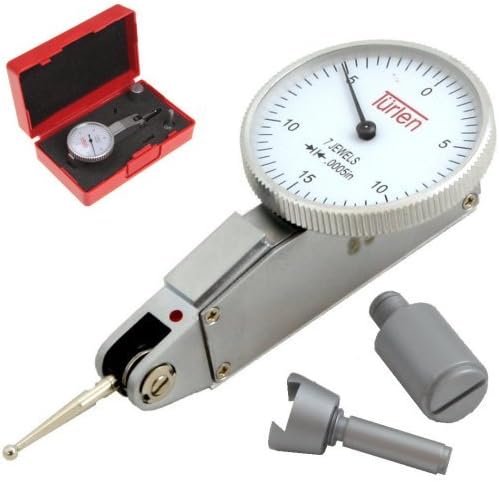- Joined
- Jun 12, 2018
- Messages
- 712
I have 2 different test indicators I bought from Amazon. Both Chinese made cheapies.
The dial shows 0, 5, 10, and 15 on the 6 o'clock position, then goes back to 10, 5, 0.
I installed a quill DRO today on my PM-835S. I was checking it's accuracy because I had to do some modifications to get it to fit since it was made specifically for a Bridgeport. I used my 2 different test indicators, lowering the quill and touching off on the test indicator. I noticed that after .015, the accuracy on both test indicators are way off. I thought it was my iGaging quill DRO that was the issue, but I used my regular indicator and it was matching it.
After .015, I assumed that I would get .020, but I got something like .017 on the quill DRO.
I contemplated buying a Mitutoyo for well over a $100, but I'm thinking these test indicators just aren't meant to go over .015.

The dial shows 0, 5, 10, and 15 on the 6 o'clock position, then goes back to 10, 5, 0.
I installed a quill DRO today on my PM-835S. I was checking it's accuracy because I had to do some modifications to get it to fit since it was made specifically for a Bridgeport. I used my 2 different test indicators, lowering the quill and touching off on the test indicator. I noticed that after .015, the accuracy on both test indicators are way off. I thought it was my iGaging quill DRO that was the issue, but I used my regular indicator and it was matching it.
After .015, I assumed that I would get .020, but I got something like .017 on the quill DRO.
I contemplated buying a Mitutoyo for well over a $100, but I'm thinking these test indicators just aren't meant to go over .015.


